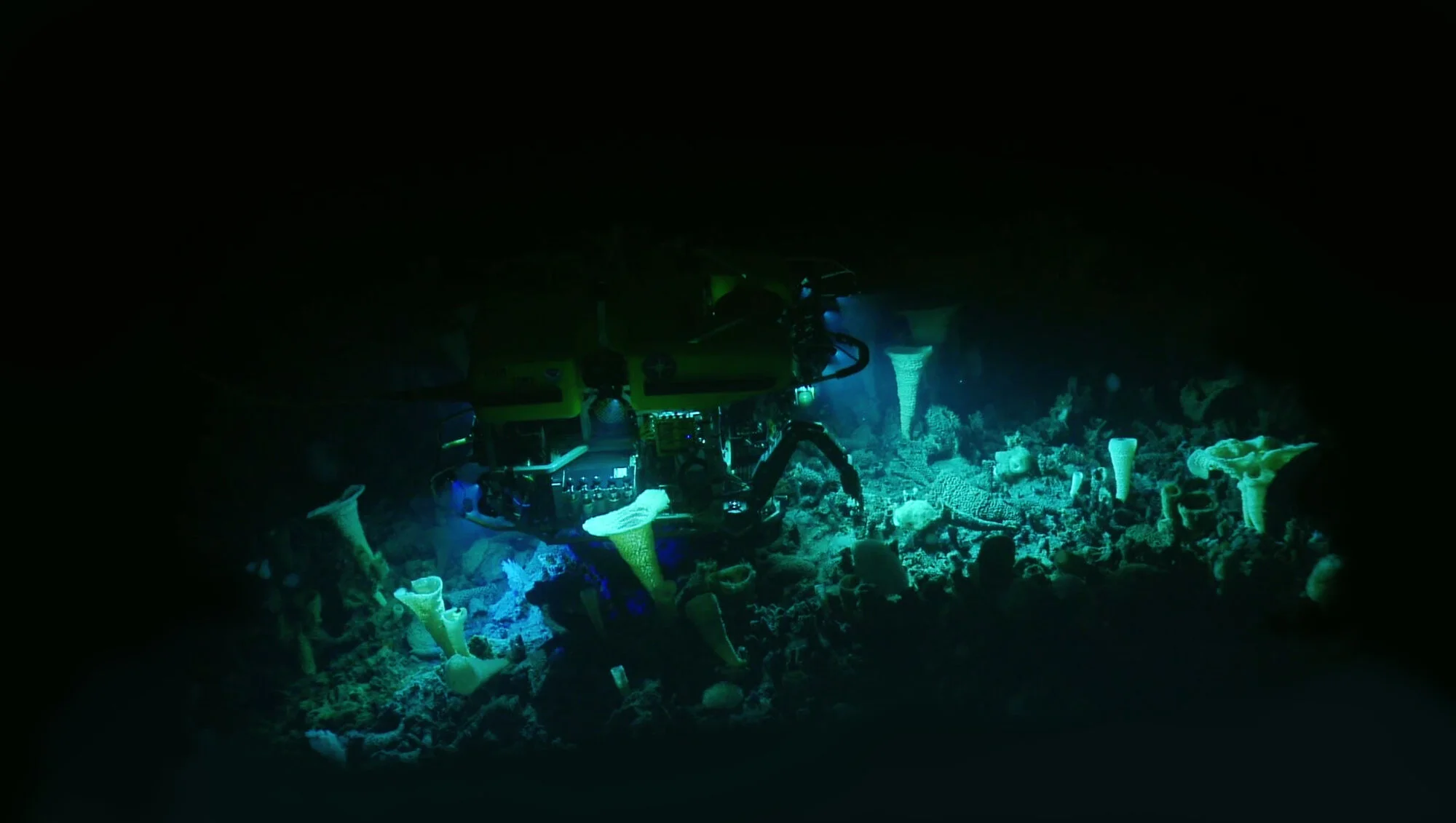All species depend on some interactions (plants on pollinators for reproduction, predators on prey for food, screech owls on woodpeckers for nesting cavities) and are harmed by others. Whenever species adapt, move, or die out, the effects ripple through ecosystems via these interactions.
Read MoreMountains are naturally diverse places, with different animals and plants living in forests and in the alpine, on windward and leeward slopes, in wet and dry meadows. With the latest advances in technology, it has become easier to document this diversity, but the sheer numbers of species to keep track of make this a daunting task. Where to start and how to set priorities?
Read MoreThe retreat of mountain glaciers worldwide is a key indicator of modern climate change, with mass loss from glaciers contributing to sea level rise and to river flows during dry and warm parts of the year. In western Canada, maintenance of low flows by glacier meltwater is essential for maintaining biodiversity, hydro-power generation, agricultural irrigation, and water supply for major cities and small towns.
Read MoreAu large des provinces atlantiques du Canada, se trouvent sous l'océan Atlantique Nord des montagnes tout aussi majestueuses et variées que dans la Cordillère nord-américaine. Elles forment des chaînes de montagnes sous-marines, de concert avec des crêtes et des plateaux plus grands qui s'élèvent de 1 000 à 3 000 mètres au-dessus du grand fond océanique, et constituent des sites importants de biodiversité marine.
Read MoreOffshore from Canada’s Atlantic Provinces, in the North Atlantic Ocean (Figure 1), are mountains every bit as majestic and varied as those of the Western Cordillera. They form chains of seamounts, together with larger ridges and plateaus rising one to three thousand metres above the deep ocean floor.
Read MoreWe lose sunlight quickly. Thirty meters down is already pitch black. The area illuminated by the beams of our lights seems modest for our mission. Imagine mapping the Rocky Mountains at night by flashlight. What we do is similar, but, for the full effect, imagine an unexplored Banff is hidden below three kilometres of water.
Read MoreModern mountaineers can view mountains and routes in broad daylight, but cave exploration remains a journey into unknown territory. The underground is hidden, and even finding a cave can be a challenge. Searching for new cave systems may require as much effort as exploring them.
Read MoreThe Canadian Mountain Network (CMN) strongly advocates for bringing Indigenous knowledge and Western science together in research partnerships to inform and enhance decision-making. This pan-Canadian research network supports the resilience and health of Canada’s mountain peoples and places.
Read MoreThe atmosphere in many of the high-elevation mountains on Earth is warming faster than the global average, a phenomenon referred to as Elevation Dependent Warming . There is growing evidence that EDW is a global phenomenon, supported by both observations and climate modeling studies, and it appears that many of the highest mountain ranges are warming more rapidly than the surrounding lowlands.
Read MoreFour Calgary students concerned about how the areas in the Rocky Mountains are being managed took it upon themselves to create a meaningful learning experience with experts, stakeholders, and other youth from across western Alberta and eastern B.C.
Read MoreL'entraînement récréatif aux avalanches a commencé son développement à la fin des années 1980 grâce à la Patrouille canadienne de ski et l'Association canadienne des avalanches (Canadian Avalanche Association).
Read MoreAccident prevention means supporting backcountry users with training and tools that help them make good decisions in avalanche terrain, and providing them with the ability to respond to their own incidents effectively.
Read MoreScattered throughout the mountains of western Canada, often hidden behind locked gates at the end of gravel roads, are mines. Although they are concealed from much of society, it is worth highlighting the role of mining in these rapidly-changing, remote landscapes.
Read MoreIn this article, the authors highlight the emerging hazards of landslides and volcanic activity that are associated with a warming cryosphere in British Columbia. There are many similarities between these examples and the hazards that exist in other mountainous areas around the world.
Read MoreHow did the ACMG come to be, what do they do and where are they headed? ACMG’s President Sylvia Forest gives us a full run-down on the organization’s origins and evolving goals.
Read MoreThis year marks the publication of the third annual volume of The Alpine Club of Canada’s State of the Mountains Report. Of course, 2020 will certainly be remembered as a very strange and unsettled year for most of us. Mountains may seem to be immune to human crises and influences, but the Covid-19 pandemic is a stark reminder that all places on our planet are intimately connected.
Read MoreEach summer, alpine snowfields across Canada undergo a startling transformation from white to pink, orange, or a startling red, known as watermelon snow. Microscopic examination reveals a hidden ecosystem that is stunningly beautiful and surprisingly complex.
Read MoreMountain caribou, the iconic resident of the area now known as Jasper National Park, are unfortunately on the decline. Learn a bit of history around the Jasper-area caribou and the events leading up to their population decrease.
Read MoreTwo serious accidents in the 1950’s within Banff National Park prompted Parks Canada to form what we know today as Visitor Safety. The team focusses on the prevention of incidents, as well as their responses to them.
Read MoreEver wonder how the mountains you’ve come to love came to be? John Waldron provides an overview of our early ideas and an outline of plate tectonics. Learn how the large arms of the Gros Morne National Park fjords were formed and what ice recession means for the mountains in our future.
Read More















![Milestones: Past, Present and Future of the Association of Canadian Mountain Guides [2020]](https://images.squarespace-cdn.com/content/v1/5e7568e0698dd75764fc4247/1602803630782-VW89REI7T2JOPKM68XM9/Image+3_1.jpg)

![Watermelon Snow: A Microscopic Serengeti [2019]](https://images.squarespace-cdn.com/content/v1/5e7568e0698dd75764fc4247/1587501595449-O4WMKF7YAMFRFGL1ZWZF/Screen+Shot+2020-04-21+at+2.38.55+PM.png)
![Southern Mountain Woodland Caribou in Jasper National Park [2019]](https://images.squarespace-cdn.com/content/v1/5a1f230a6957da4aa04a790c/1581813455214-21ZKG40X8RPE2RWLKVZ1/Screen+Shot+2020-02-15+at+4.06.04+PM.png)
![Parks Canada Visitor Safety Program Focussed on Incident Prevention and Response [2019]](https://images.squarespace-cdn.com/content/v1/5a1f230a6957da4aa04a790c/1579026316055-MFIDZZFH28WU4XWBEOGK/Screen+Shot+2020-01-14+at+11.22.49+AM.png)
![The Birth of a Mountain Range in the Appalachians of Newfoundland [2019]](https://images.squarespace-cdn.com/content/v1/5a1f230a6957da4aa04a790c/1576092326571-B1RTSJ6O8NPI9UR6AZ7K/Screen+Shot+2019-12-11+at+11.45.05+AM.png)